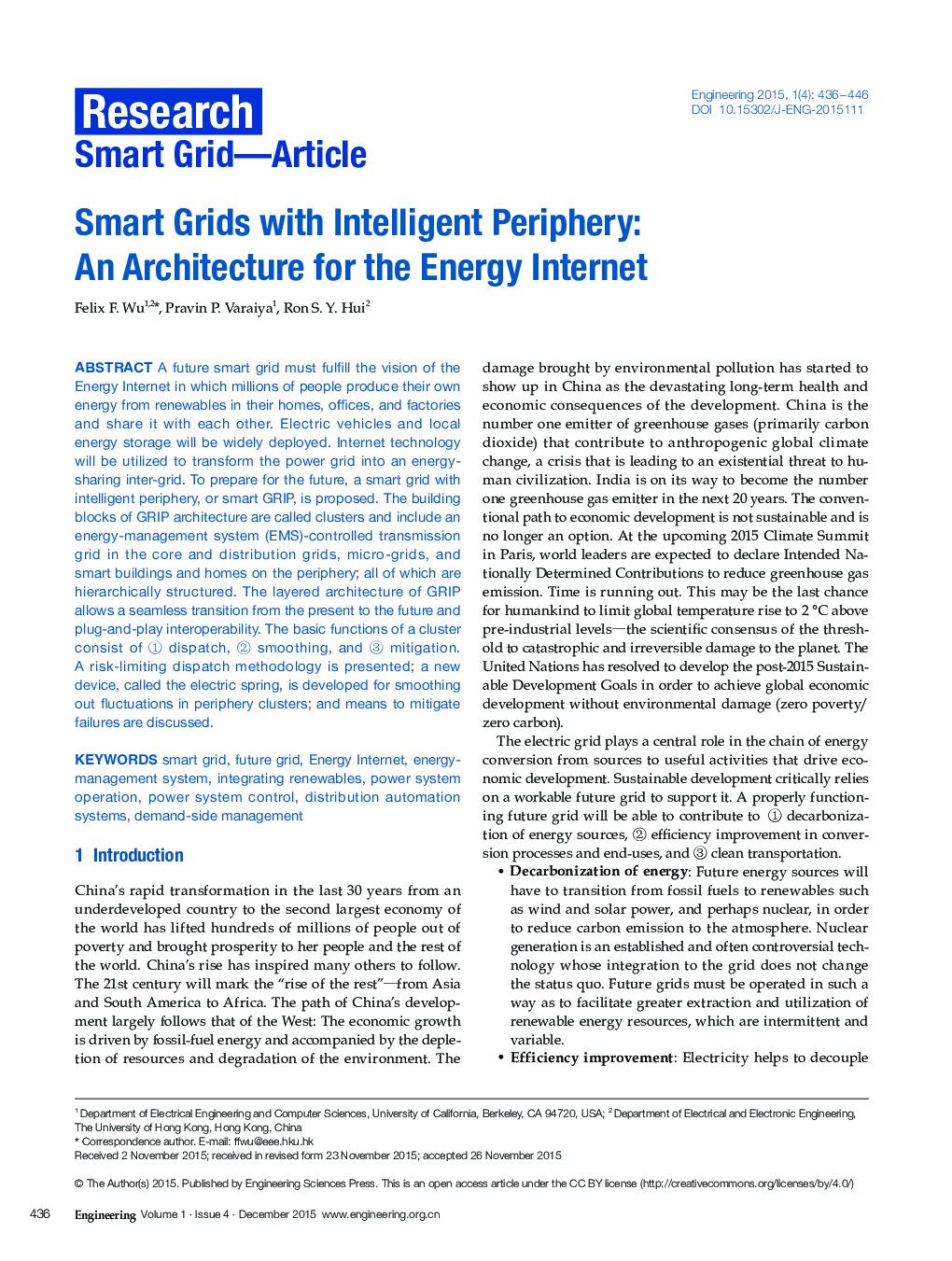| Article ID | Journal | Published Year | Pages | File Type |
|---|---|---|---|---|
| 477432 | Engineering | 2015 | 11 Pages |
ABSTRACTA future smart grid must fulfill the vision of the Energy Internet in which millions of people produce their own energy from renewables in their homes, offices, and factories and share it with each other. Electric vehicles and local energy storage will be widely deployed. Internet technology will be utilized to transform the power grid into an energy-sharing inter-grid. To prepare for the future, a smart grid with intelligent periphery, or smart GRIP, is proposed. The building blocks of GRIP architecture are called clusters and include an energy-management system (EMS)-controlled transmission grid in the core and distribution grids, micro-grids, and smart buildings and homes on the periphery; all of which are hierarchically structured. The layered architecture of GRIP allows a seamless transition from the present to the future and plug-and-play interoperability. The basic functions of a cluster consist of ① dispatch, ② smoothing, and ③ mitigation. A risk-limiting dispatch methodology is presented; a new device, called the electric spring, is developed for smoothing out fluctuations in periphery clusters; and means to mitigate failures are discussed.
